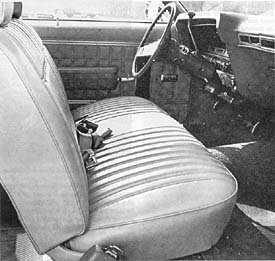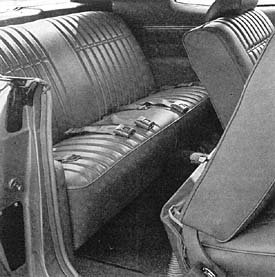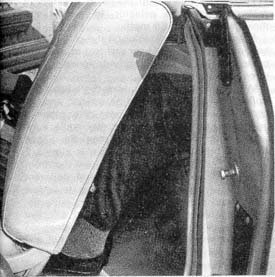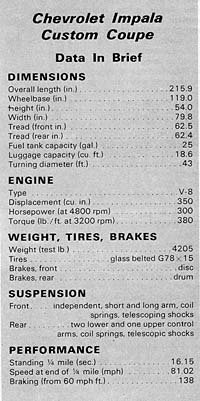| Brakes and safety We mentioned that 11 3/4-inch discs are now standard equipment on the Impala Custom Coupe, the Caprice, and the Kings Estate station wagon, and that they are a $64 option for the other models in this line. By all means get them. It isn't that discs will stop a car better than drums under ideal conditions. It's that discs will do it repeatedly without fade, and will do it whether they're wet or dry, With even the best of drums, you are basically dealing with a small enclosed oven. The frictional heat of braking can only escape by traveling through the cast iron | 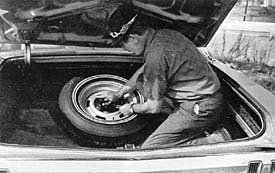 You don't lift the spare out of the lmpalas trunk, you climb in and get it. Trunk should prove handy for carrying 14 suitcases or one dead horse. |
